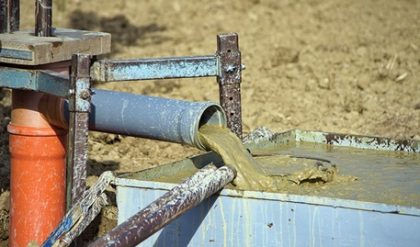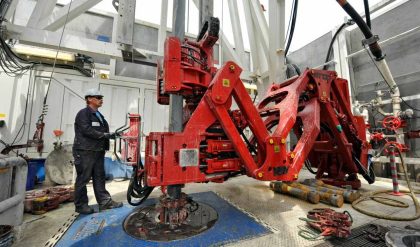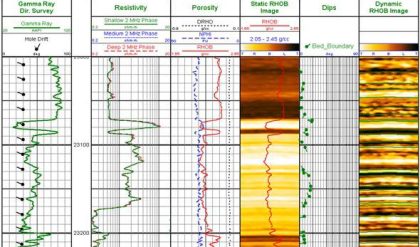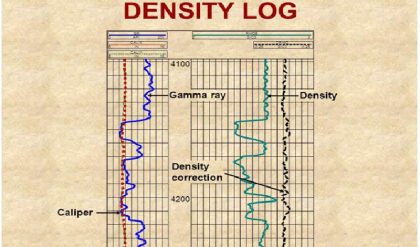Openhole caliper logs provide data used in completion planning. Openhole calipers can be used with different types of logging tools and it is important to understand how the logging tool used may affect the resulting data.
Caliper tool
Openhole calipers comprise up to six arms attached to the body of a sonde and held against the borehole wall by spring action. They provide a continuous measurement of borehole diameter. In general, one- and two-arm calipers measure only the maximum diameter where a hole is not circular. Four- and six-arm tools define the hole size and shape, and this is especially important in deviated wells and elliptically shaped wellbores. However, the size and pressure of the contacting arms also affect the measured data. This means that a caliper run with the density-log tool string might show a larger hole diameter than one run with the induction log. This is because the density tool is a pad device, and the pad cuts through the mudcake to sense a larger diameter, whereas the induction tool is a mandrel device (i.e., it is essentially contained within a cylindrical housing). For these reasons, different openhole caliper logs should not be expected to show precise repeatability.
The movement of the caliper arms must be converted to something that is measurable at the surface. Most modern calipers use a potentiometer circuit connected to the caliper arms using transducers. The circuitry can use direct current or pulses. In the former case, the displacement of the arms translates directly to a voltage within the measuring circuit. Pulsed caliper tools use the potentiometer to deliver a variable voltage to a voltage-frequency circuit. The frequency of the pulse train is proportional to the extension of the caliper arm. A basic problem with armed calipers is that the extension of an arm is not directly proportional to the displacement of the transducer. This gives rise to a nonlinear response, which is linearized through data processing based on detailed calibration data. A caliper tool is designed to operate over a specified range of hole diameter. The design sets out to minimize nonlinearity of tool response over this range.
Use of openhole caliper logs
Openhole caliper data are used to estimate the volumes of gravel and cement needed for well-completion planning. Other openhole uses include providing information on the buildup of mudcake over permeable intervals and locating seats for packers (hydraulic seals used to isolate sections of the wellbore for flow-test purposes). They also indicate where boreholes are washed out or penetrate swelling clays as a result of rock/filtrate interaction. Yet again, calipers can be used to center or eccenter logging-tool strings. However, in a logging context, the greatest application of caliper data is in environmental corrections to other logs such as
· Natural gamma ray
· Density
· Neutron logs
It is this application that makes the calibration and depth matching of caliper data especially important. Calibration is carried out using rings or sleeves of known diameter. Depth matching is usually done by applying to caliper data those same depth shifts that were generated by comparing the gamma log on the same tool string with the depth-reference gamma log where this has been measured on a different logging run.






Comments are closed.